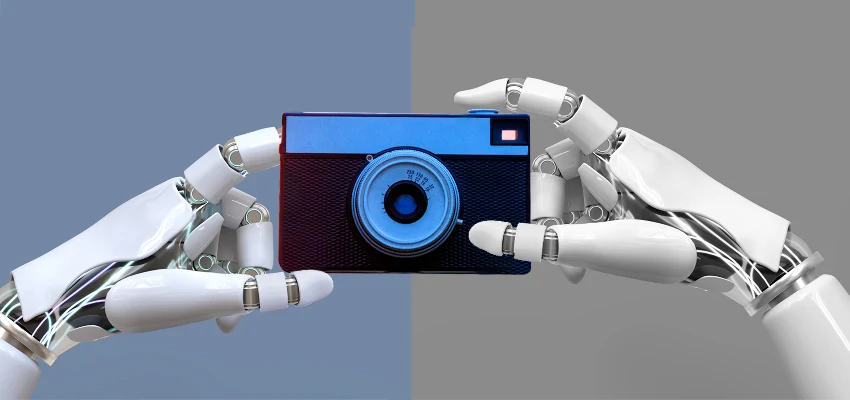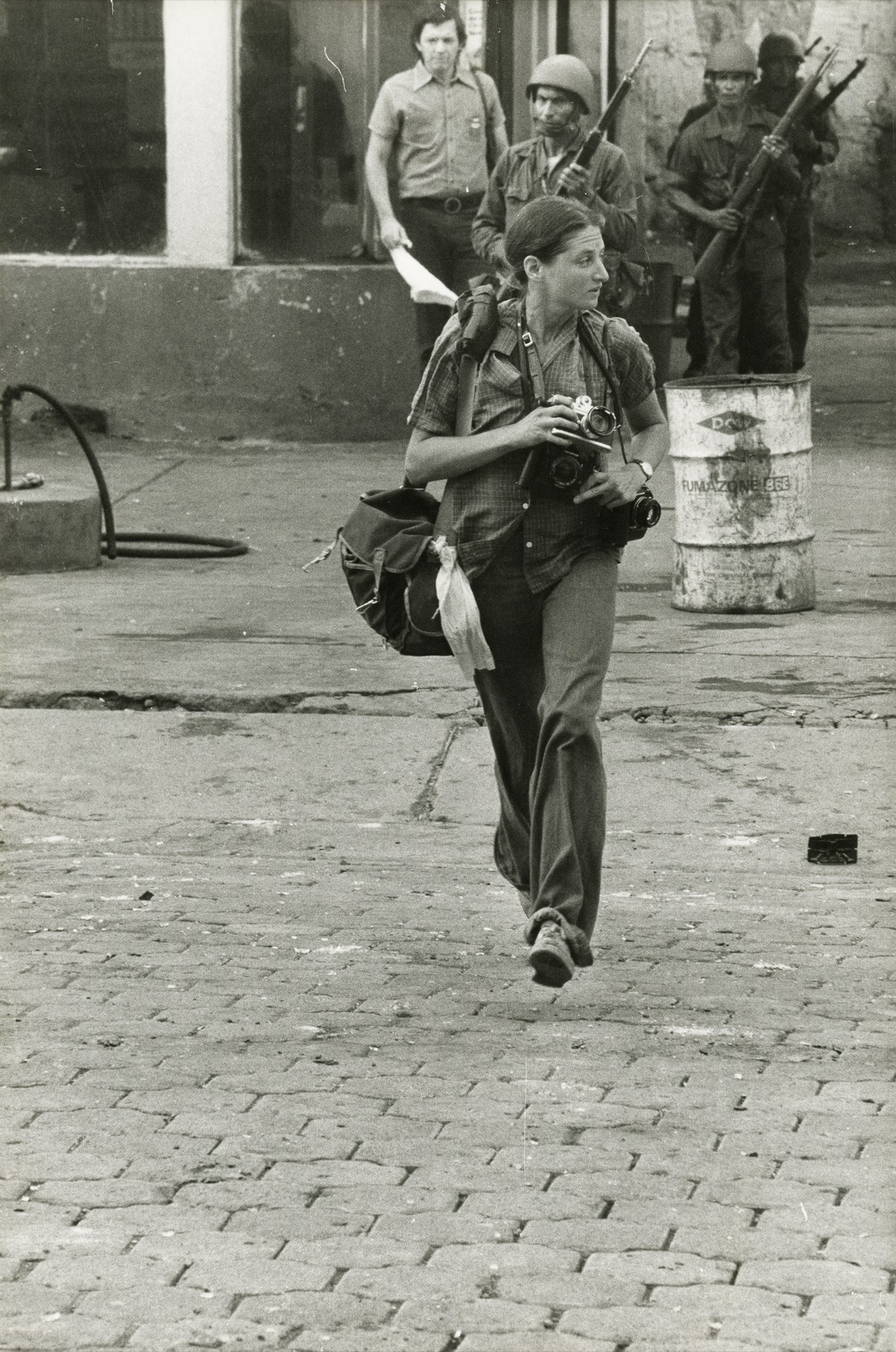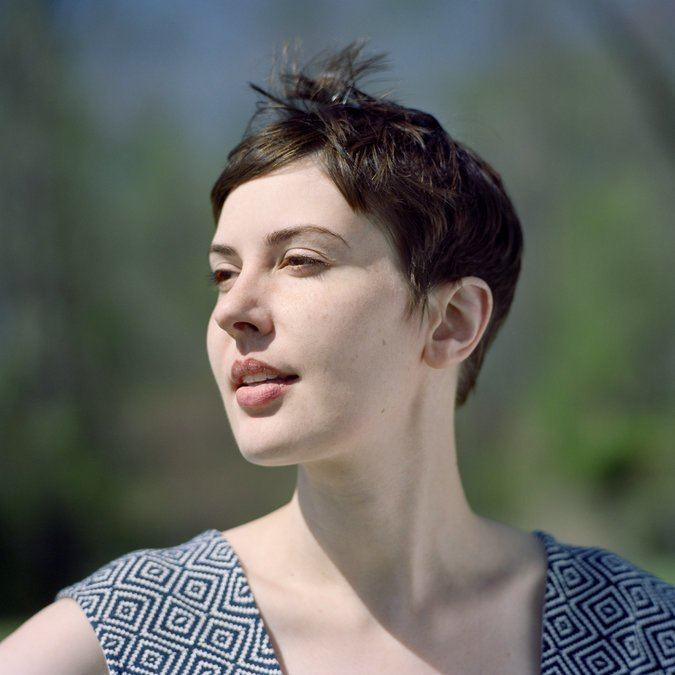AI and photography are intersecting in groundbreaking ways, reshaping the landscape of visual storytelling. The impact of AI on photography goes beyond merely enhancing image quality; it raises significant discussions about authorship, accuracy, and the preservation of historical archives. As AI technologies continue to evolve, they present both exciting potentials and challenges for photographers, particularly in photojournalism and AI applications. From organizing vast photo archives to analyzing complex war imagery, artificial intelligence is not only streamlining workflows but also redefining how we understand and engage with visual narratives. With the urgent need to confront the challenges in photo archives, leveraging AI could safeguard the integrity of photography while preserving invaluable moments of our history.
The convergence of artificial intelligence and visual art is transforming traditional photography in unprecedented ways. Today’s technological advancements are enabling new forms of photo analysis and archival organization that were once deemed impossible. This shift in the industry raises essential questions about the ethical implications of machines interpreting human experiences captured in images. Moreover, as the realm of photojournalism adapts to the digital age, the integration of AI tools is essential for efficient preservation of important photographic records. As we delve into the evolving dialogue on AI in visual storytelling, the challenge lies in balancing innovation with the authenticity and memory that photography embodies.
The Intersection of AI and Photography
Artificial Intelligence (AI) has profoundly reshaped the face of photography by introducing both challenges and opportunities. On one hand, AI’s ability to generate hyper-realistic images poses significant threats to the authenticity of photographic art. This has raised concerns in the photography community, particularly among photojournalists, who rely on visual evidence to communicate truth and narratives. As AI continues to evolve, the implications for creative professionals, and their understanding of reality, are scrutinized under a critical lens. Therefore, embracing AI is not merely about adaptation; it is about redefining the boundaries and ethics of visual representation.
Conversely, AI’s potential to enhance photography is equally remarkable. For instance, image recognition algorithms can aid photographers in organizing vast archives, categorizing images, and preserving visual histories that might otherwise be lost. This application underscores the significant role AI can play in safeguarding the legacy of photojournalism. As photojournalists confront the daunting challenge of preserving untapped archives, AI emerges as a valuable ally in cataloging and contextualizing their narratives, ultimately enriching the storytelling aspect of photography.
AI’s Impact on Photojournalism
Photojournalism stands at a pivotal crossroads as AI technology continues to infiltrate the field. Kira Pollack’s observations shed light on how AI can bolster the narratives created by photojournalists, allowing for deeper engagement with historical contexts. With the ability to analyze emotions and subtle details within images, AI can help to elevate the complexities of photojournalistic storytelling. In an age where misinformation proliferates, AI tools can provide context and clarity, reinforcing the integrity of images by ensuring they are properly categorized and attributed.
However, the integration of AI also raises significant concerns about authenticity and trust. The emergence of AI-generated images complicates the identity of photojournalism, making it vital for practitioners to navigate the ethical landscape. Copyright issues are an additional layer of complexity, as AI technology often relies on vast datasets, potentially infringing on the rights of individual photographers. As the photojournalism community grapples with these challenges, it is crucial to explore effective framing and boundaries for AI, ensuring that it enhances rather than undermines the pursuit of truth.
Preserving Photography with AI Technology
The preservation of historical images has never been more vital, given the rapid evolution of digital technology and the existential threats posed by AI. Kira Pollack highlights the urgent need to secure the integrity of photo archives, which contain irreplaceable visual histories that define our shared experience. The challenge lies not only in maintaining these archives but also in ensuring they are accessible and meaningful to future generations. AI presents an unprecedented opportunity to digitally preserve these images, allowing for better organization and discovery.
AI’s role in archiving is not just about storage; it is about reviving narratives that might otherwise fade into obscurity. By using AI to analyze and interpret images, we can illuminate nuanced stories and hidden connections within vast collections. This approach not only preserves the essence of the photographs but also honors the legacy of those who captured them. As we investigate how AI can ethically aid in the preservation process, it becomes essential to engage with the ethical implications of this technology and its relationship to authorship and the contextual richness of photography.
Challenges in Photo Archives
The fate of photo archives is a pressing concern within the photojournalism community, as Kira Pollack illustrates through her experiences in this area. The sheer volume of unutilized images within archives—often representing historical moments—poses a dilemma for both preservation and understanding. Many of these visuals remain unseen and unaffiliated with their impactful narratives. As archives face threats from both decay and neglect, identifying effective strategies for preservation becomes urgent. In this landscape, AI can aid photojournalists in evaluating and organizing their collections, making them more discoverable to the public.
Moreover, the challenges faced by photo archives are compounded by the risks brought about by AI—issues of copyright, misattribution, and unauthorized use. As AI tools become increasingly integrated into photography, the potential for misuse may hinder the very preservation strategies they aim to enhance. This contradiction epitomizes the need for careful consideration in the implementation of AI solutions. It is crucial that photojournalists not only invest in AI tools for better archive management, but also advocate for ethical standards that prioritize respect for originals and their creators.
Visual Storytelling in the Age of AI
Visual storytelling has always been a cornerstone of photojournalism, their narratives imbued with authenticity and emotional resonance. However, the rise of AI in the field introduces new dynamics to storytelling techniques. AI enables photojournalists to analyze large datasets quickly, drawing out meaningful insights that can elevate visual narratives, enriching the contextual information shared alongside images. This newfound ability allows journalists to create dynamic, informed storytelling that goes beyond static depictions, engaging audiences in unprecedented ways.
Nonetheless, as technology evolves, so too must our understanding of narrative integrity. The challenge lies not only in using AI to enhance storytelling but also in ensuring that stories told through AI remain true to the craft of photography—grounded in reality and genuine human experiences. As photojournalism integrates AI into its methods, reinforcing the moral compass of visual storytelling becomes paramount. By balancing technological advancements with the commitment to authentic narratives, photojournalists can navigate the complexities of modern visual storytelling while upholding its core values.
Ethical Considerations in AI-Driven Photography
As artificial intelligence continues to influence various sectors, its ethical implications within photography are becoming more crucial than ever. The proliferation of generative AI poses serious questions surrounding originality, ownership, and exploitation. Photographers must navigate a landscape where their work can be easily appropriated without their consent for training AI models. Protecting intellectual property rights amidst this technological disruption is a challenge that the photography community cannot ignore.
Moreover, ethical considerations extend beyond copyright. The potential for AI to create misleading images raises concerns about the erosion of trust in the profession. In a realm where photojournalism relies heavily on credibility and factual representation, addressing these ethical dilemmas is critical. As we explore the interplay between AI and photography, it becomes evident that engaging in these discussions will empower professionals to shape a future where technology serves to enhance, not compromise, the integrity of the visual narrative.
AI’s Role in Enhancing Historical Photography
AI stands poised to play a transformative role in enhancing the understanding and appreciation of historical photography. By utilizing AI-driven tools to analyze large collections of images, we can unlock narratives that have long been obscured or forgotten. Kira Pollack’s research highlights this potential, where AI can assess not only visual components but also contextual elements such as emotion and symbolism. This deep analysis strives to reconnect viewers with the past and offers a richer engagement with history through the lens of photography.
In addition, AI’s capabilities can streamline the process of digitizing and preserving older photographs. By making these collections accessible and searchable, AI enables a broader audience to interact with historical photography, fostering appreciation for the artistry and historical significance of these works. As we leverage AI in this arena, it is vital to maintain a dialogue on ethical implications, ensuring that the integrity of the photography remains intact while opening new avenues for discovery.
Navigating the Future of Photography with AI
As we look towards the future, the intersection of AI and photography presents both challenges and exciting opportunities for the industry. The landscape of image-making is on the brink of a transformation that could redefine our understanding of visual arts. As photojournalists adopt new technologies, they must also be equipped to embrace this evolving environment with a progressive mindset that prioritizes both innovation and ethical responsibility.
Ultimately, navigating the future of photography involves a collaborative effort among photographers, technologists, and ethicists. Encouraging open dialogue will allow for the collective determination of how AI can enhance photography while safeguarding its core values, such as truth, authorship, and memory. Embracing this journey as a community will empower photographers to harness AI’s capabilities responsibly, ensuring that the art form continues to thrive in a rapidly changing world.
Frequently Asked Questions
What is the impact of AI on photography in terms of preserving photo archives?
AI has the potential to revolutionize the preservation of photo archives by efficiently cataloging and organizing vast collections of images. Photojournalists often create extensive archives that contain invaluable visual histories. Using AI, we can ensure these archives are accessible and the narratives within them are preserved, helping to maintain the legacy of photojournalism in an era where genuine imagery is at risk of being overshadowed by AI-generated content.
How is AI influencing photojournalism and visual storytelling today?
AI is significantly influencing photojournalism by enhancing the way stories are told visually. Through advanced image analysis, AI can interpret complex scenes, extracting narratives that might be overlooked. This capability enables photojournalists to convey deeper meanings in their work, making visual storytelling more impactful and engaging for the audience. Additionally, AI tools can help discover and contextualize important historical images, ensuring they resonate with contemporary issues.
What are the challenges in preserving photography with AI technology?
While AI offers promising solutions for preserving photography, several challenges remain. One key issue is the ethical use of AI in training models, particularly concerning copyright and consent for using photographers’ work. There’s also the challenge of ensuring AI interpretations do not misrepresent a photographer’s intent. Balancing these concerns with the need to preserve and organize photo archives is critical in utilizing AI responsibly in photography.
Can AI help in maintaining the integrity of photojournalism while enhancing its reach?
Yes, AI can help maintain the integrity of photojournalism by providing tools that reinforce ethical standards in image usage. By automating the organization and contextualization of archives, AI can allow photojournalists to present their work accurately and responsibly. This ensures that while the reach of their photography is expanded through digital platforms, the visual truths captured remain protected and authentic.
What roles do AI tools play in the future of photo archives and visual history?
AI tools are poised to play a vital role in shaping the future of photo archives and visual history by making them more interactive and accessible. These tools can assist in sorting through extensive collections, identifying key themes, and enhancing public engagement with visual narratives. As AI continues to develop, it may also help preserve the works of current and past photojournalists, ensuring their contributions to visual history are celebrated and remembered.
| Key Points | Description |
|---|---|
| AI’s Impact on Photojournalism | Kira Pollack discusses how AI poses threats like misinformation and copyright issues, but also holds potential for preserving the legacy of photographers. |
| Historical Context | The conversation includes insights about documenting major events like the U.S. invasion of Iraq and examining the emotional complexities of images. |
| Challenges of Archives | Pollack stresses the importance of preserving the vast archives of photojournalists, which often contain unrecognized work from significant historical events. |
| AI in Image Analysis | Experiments showed AI’s capability to analyze complex conflict imagery, revealing depth in storytelling beyond basic identification. |
| Ethics and Trust | There are distinct concerns regarding generative AI eroding trust and the need to protect photographers’ rights amidst rapid advancements. |
| Future of AI in Photography | Pollack aims to engage in a multidisciplinary dialogue on how AI can uphold the core values of truth, authorship, and memory in photography. |
Summary
AI and Photography are rapidly intersecting fields poised to redefine the landscape of image-making and preservation. With the rise of artificial intelligence, there are both significant opportunities and challenges for photojournalism. Kira Pollack’s initiatives highlight how AI can be harnessed to archive and analyze vital visual history while addressing concerns over misinformation and copyright. As these technologies evolve, they offer the potential to not only safeguard the integrity of the photographic record but also enrich our understanding of significant events captured through the lens of photojournalists.



